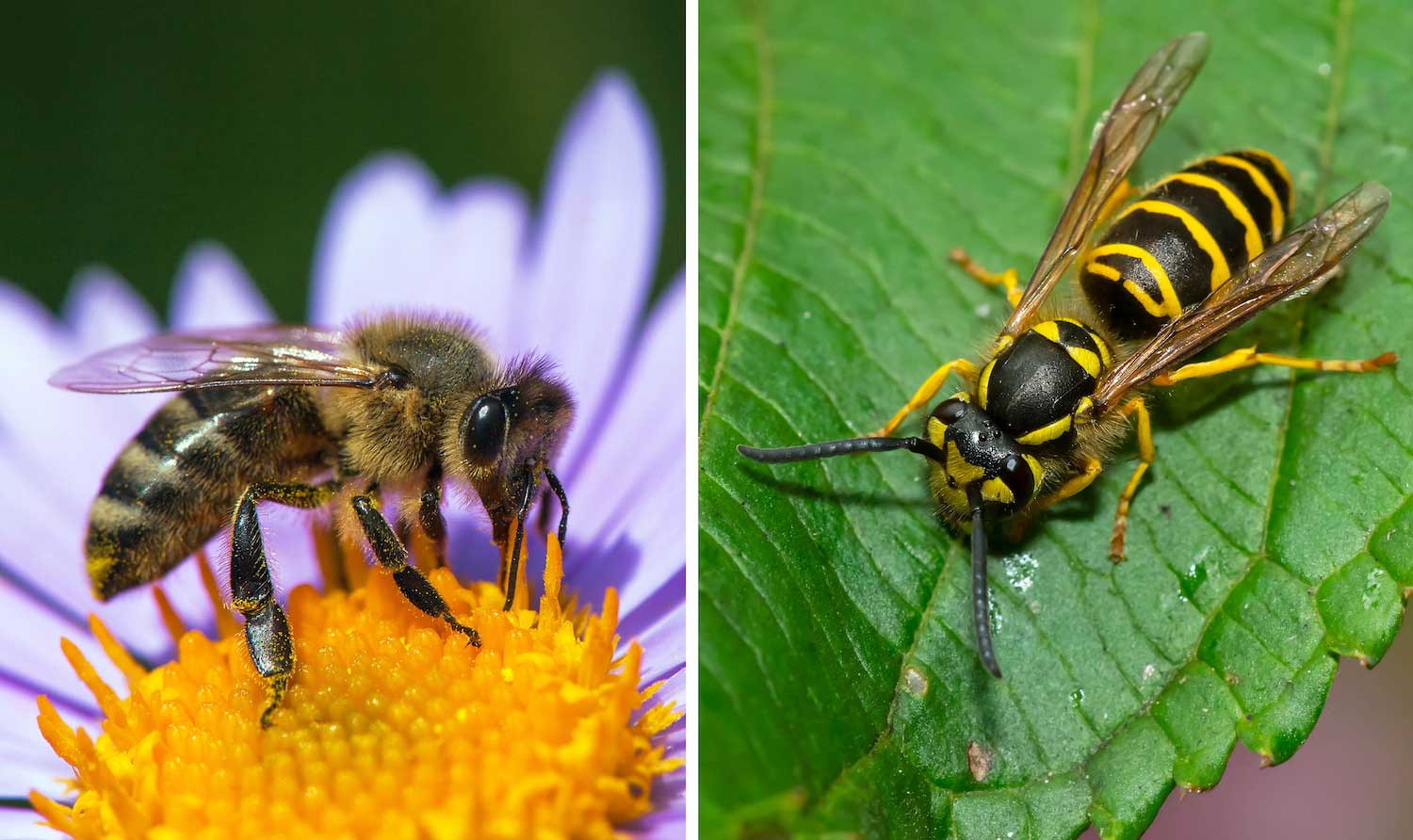What's the difference?: Honeybee vs. yellow jacket

The buzz of an insect in your ear can come from many different sources, from mosquitoes and flies to bees and wasps. When it's a bee or wasp buzzing by, two common culprits can be cause for confusion.
Honeybees and yellow jackets are easy to confuse with one another because they look somewhat similar and we encounter them in the same places and spaces. There are a few ways you can distinguish between them based on their appearance, however.
One key identification feature is a "waist" or lack thereof. Yellow jackets are a type of wasp, and all wasps have a waistline where their abdomens become tapered where it meets the thorax, according to the Illinois Department of Public Health. Bees do not have these narrow waists where the abdomen meets the thorax.
Color and texture can also be telltale signs of whether the buzzing insect you are seeing is a honeybee or yellow jacket. Both are striped, but yellow jackets have bright yellow and black stripes while honeybees are more honey brown in color rather than bright yellow, the Illinois health department reports. Honeybees are also covered with short, fuzzy hairs, while yellow jackets are smooth, not fuzzy.
Both honeybees and yellow jackets will defend their hives and nests if disturbed, and both are capable of stinging. However, yellow jackets are extremely aggressive and will give chase, while honeybees will not chase after threats. More people are stung by yellow jackets than any other kind of bee or wasp. They can also sting repeatedly, whereas honeybees can sting only one time and die after using their stinger, according to the Illinois Department of Public Health.
Both honeybees and yellow jackets are beneficial insects. Honeybees, of course, give us honey, but they are crucial to our food supply as well, responsible for pollinating more than $15 billion worth of crops in the United States every year, according to the U.S. Department of Agriculture. Yellow jackets are beneficial because they feed on caterpillars, harmful flies and other insects that can damage crops, according to the Clemson University Cooperative Extension. They also drink nectar, so they, too, work as pollinators, but they are not a significant source of pollination.
Yellow jackets are also more active and act more territorial or defensive during late summer and fall, the Mississippi State University Extension reports. They nest in the ground and can become aggressive when their nests are disturbed by people walking nearby. We generally think of honeybees as nesting in the hives and combs maintained by beekeepers, but they will also build homes in building spaces such as attics and walls if they can get access. Yellow jackets may also sometimes nest in these interior spaces.
Because of their aggressive nature and because they can be attracted to sweet liquids and human food, yellow jackets can pose a risk to people, the Illinois Department of Public Health reports. The best way to manage them is to focus on prevention, mainly by keeping food enclosed and using garbage containers with tight-fitting lids.
If you do get stung by either a honeybee or yellow jacket, basic first aid can help relieve the discomfort. First, wash the affected area with soap and water, the U.S. Centers for Disease Control and Prevention advises. Next, remove the stinger (honeybees will leave a stinger; yellow jackets may sometimes leave a stinger) by scraping a credit card or similar object over the site of the sting. (Do not use tweezers.) Next apply ice to reduce swelling. You can also take over-the-counter pain medications for pain relief and use topical creams such as hydrocortisone to lessen redness and itching.
For most people, bee stings are minor, causing pain, swelling and redness that will resolve after a few hours, Mayo Clinic reports. However, some people experience more moderate or even severe, life-threatening allergic reactions to stings from bees and other stinging insects.
People who have moderate reactions to bee stings experience more severe redness and swelling that can gradually worsen for a day or two and then take five to 10 days to resolve, Mayo Clinic reports. Severe reactions cause anaphylaxis and require emergency medical treatment. Signs of a severe reaction include difficulty breathing; swelling of the tongue and throat; nausea, vomiting or diarrhea; fainting; changes in heart rate; and hives or other skin changes.
